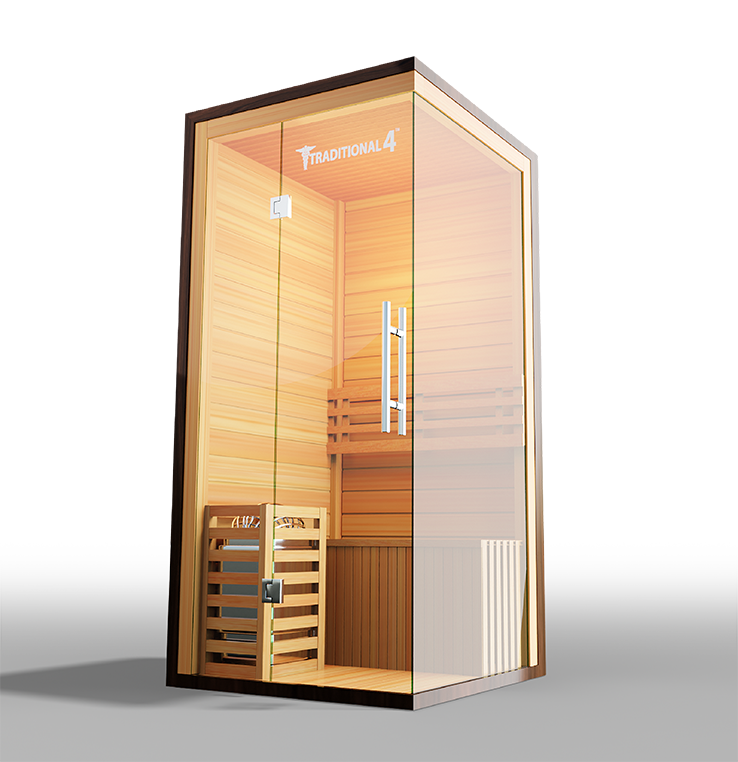Traditional Sauna Fundamentals Explained
Wiki Article
The 9-Minute Rule for Traditional Sauna
Table of ContentsThe 10-Minute Rule for Traditional SaunaTraditional Sauna Fundamentals ExplainedAll about Traditional SaunaThe smart Trick of Traditional Sauna That Nobody is DiscussingHow Traditional Sauna can Save You Time, Stress, and Money.
Many of the weight shed in a sauna is water loss and is re-gained upon rehydrating. However, undeniably sauna can be an integral part of a healthy and balanced weight management program. To consider the differences between traditional and IR saunas, I will separate these right into proven, theoretical, and made differences.Thus, the best factor in the saunawhich is at the ceiling directly over the sauna heateris commonly between 185 and 190 F. Claims that a conventional sauna surpasses 200 F is simply not true and not suitable for electrical saunas offered in the United States. The temperature for a far-infrared sauna is usually established between 120 and 140 F; however, unlike the typical sauna, the objective in and IR room is not to accomplish a high temperature level.
As a result of this, the temperature level distinction is virtually irrelevant, since excessive sweating leads to both sauna kinds, however the method of heating up the body is different. In an IR sauna the bather will feel hot and will sweat profusely, but at a lot lower temperatures (Traditional Sauna). Hence, if the goal is to spend longer periods of time in the sauna, the IR sauna is a great choice
When a traditional sauna has actually been effectively heated up, the sauna walls are warm, the air temperature level has actually attained established temperature level and the rocks are incredibly heated. As an interesting side note, the warmed walls and the rocks are emitting far-infrared heat, combined with the warmed air, to create an "covering warm".
The Main Principles Of Traditional Sauna

When the high temperature is achieved, the elements cycle on and off to maintain the high temperature level. A lot of typical sauna individuals delight in putting water over the rocks to create steam to increase sauna moisture levels. The benefits of pouring water over the rocks consist of: making the room a lot more comfortable, dampening the nasal passages, and enabling the use of aromatherapy by mixing important oils with the water.

When the power enters the body, it triggers the body temperature to boost and ultimately leads to sweating. In an infrared sauna it is essential for the emitters/heaters to continue to be on virtually regularly. Given that there is no mass of rocks to maintain warm, the sauna will cool down if the emitters shut down.
As stated over, the sauna bather in an infrared area wants to position himself in front of running emitters to get maximum advantage from the warmth. The home heating time for both rooms can be really different, relying on just how the spaces are utilized. For a conventional sauna, a bather must permit 30-40 mins for the space to attain a wanted temperature level and to appropriately pre-heat the rocks.
What Does Traditional Sauna Do?
A well built sauna will typically achieve a temperature of 150-160 F in about 30-40 minutes. For hotter temperature levels, the room may require to warm for a longer period. Once the room achieves established temperature, the heater will cycle on and off, usually useful link running about 50% of the moment. The protected walls and the heated rocks will certainly maintain the room hot and at secure temperatures.

Traditional saunas have a tendency to be bigger (hence make use of more electrical power) than infrared saunas, although typical saunas are definitely readily available in one and two person sizes too. For a two-person conventional sauna, 5x6 or 5x7 dimension is most popular. The top bench can pleasantly seat two or 3 individuals and is likewise long sufficient to lie down during the sauna session.
The Main Principles Of Traditional Sauna
The ordinary cost per kWH of electricity in the united state is about $0.11, so a 4.5 kW heater will cost roughly $.50 to compete one hour, if the heating unit runs constantly for one hour. Typically a sauna heater will run for 75% of visit this site the initial hour and 50% of succeeding hours on since the components cycle once the established temperature level is accomplished.
Ultimately, there is a rarely talked about difference in the social experience in between the 2 areas. While our society has lost a few of the social benefit of the traditional sauna experience, it can be very socially fulfilling (Traditional Sauna). From household time in the sauna, to heart-felt conversations with better halves, to sauna partiesthe standard sauna experience can cause intimate mingling
Traditional Sauna for Dummies
Most higher end infrared areas consist of colored light treatment, audio systems and full-glass fronts. The dimension of most areas enable 2 people to conveniently use the area, while some designs might permit for a third or 4th person to use the space. Custom infrared areas are additionally offered, with room sizes available up to 7' x 8' x 7' high.Report this wiki page